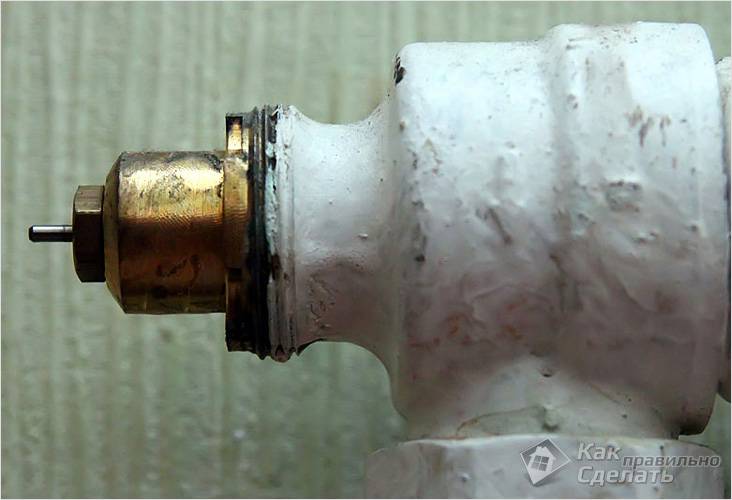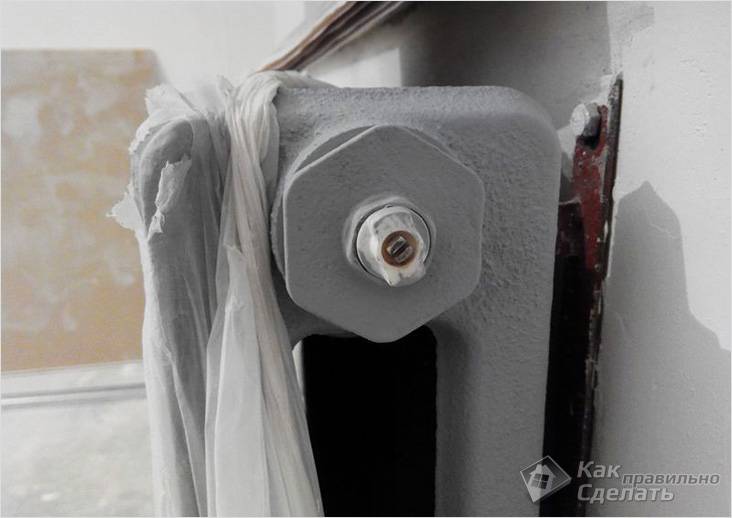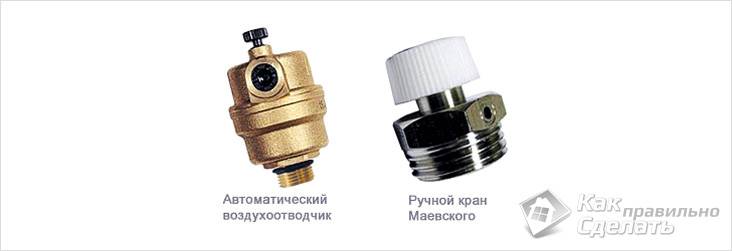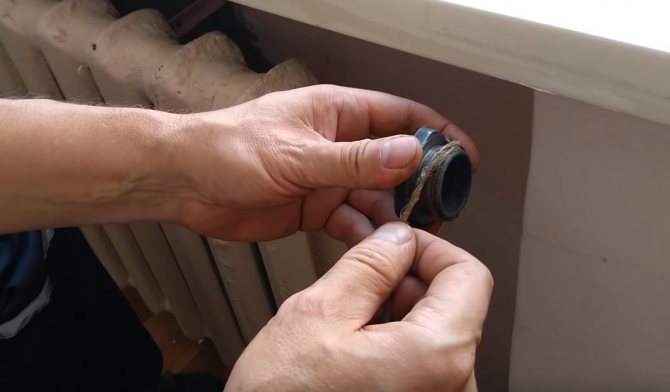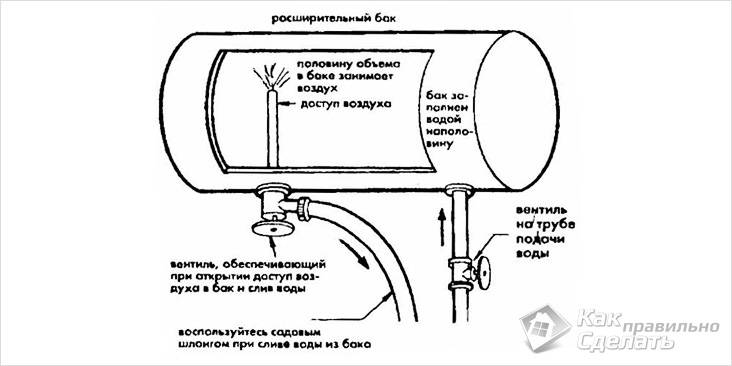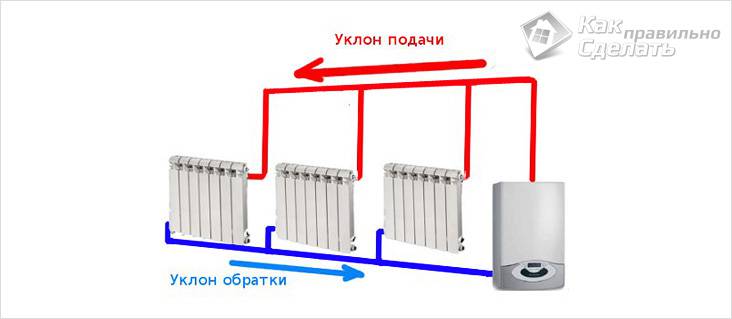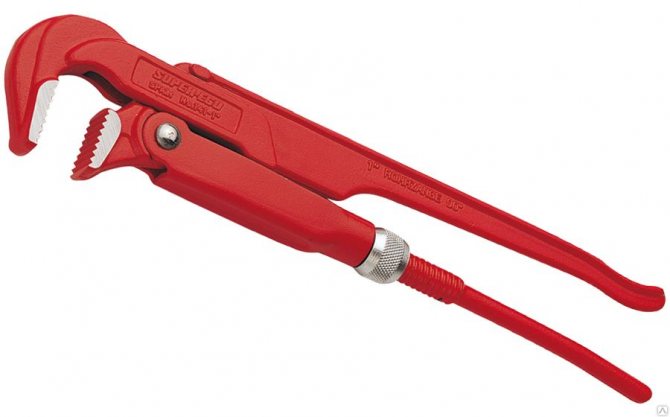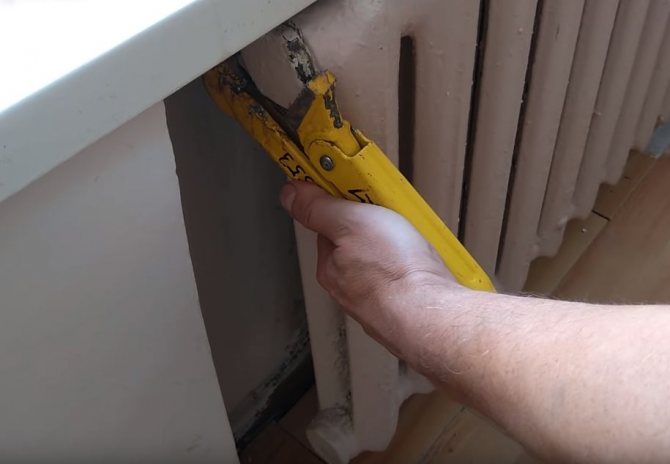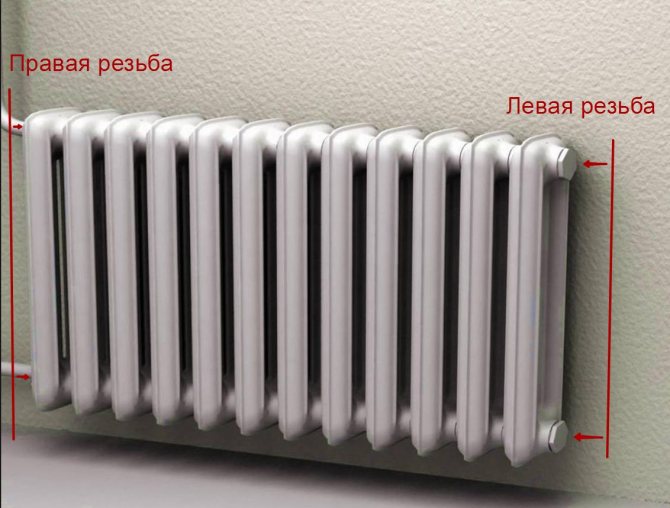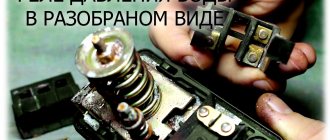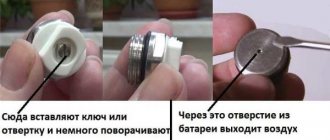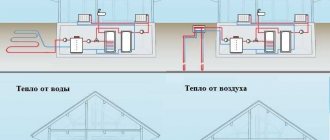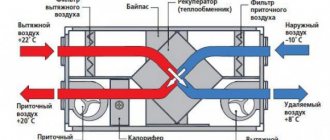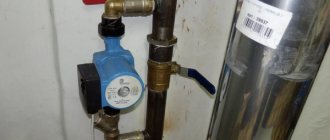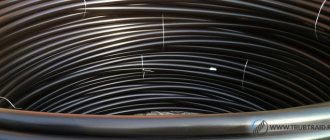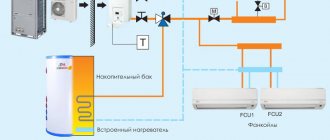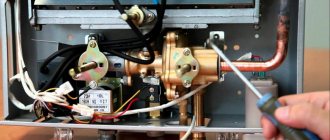
Many owners of private houses and apartments are familiar with the situation when the lower part or the entire battery is cold, while the supply pipe from the heating riser is hot. The reason for this difference is an air lock, which prevents the passage of the coolant. In the new radiators for bleeding air, a Mayevsky valve is installed, which cannot be said about the old models. In this regard, we will figure out how to bleed air from a cast-iron battery.
How to avoid air congestion
The sequence of preventive measures depends on the type of heating system.
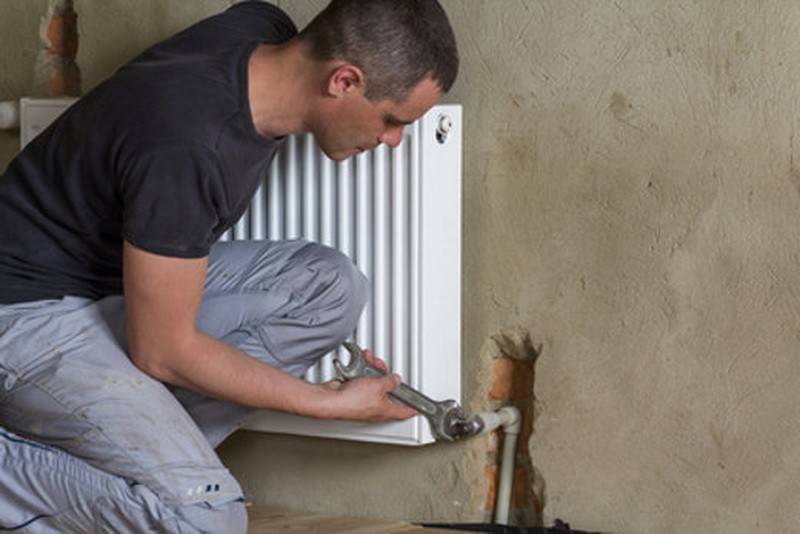

Open circuit
A system of this type is filled with hot water on its own. All valves on radiators must be open to allow unobstructed water access. It is necessary to monitor the force of pressure and not to allow too strong and rapid filling. Close the drain valve when the empty battery space is full.
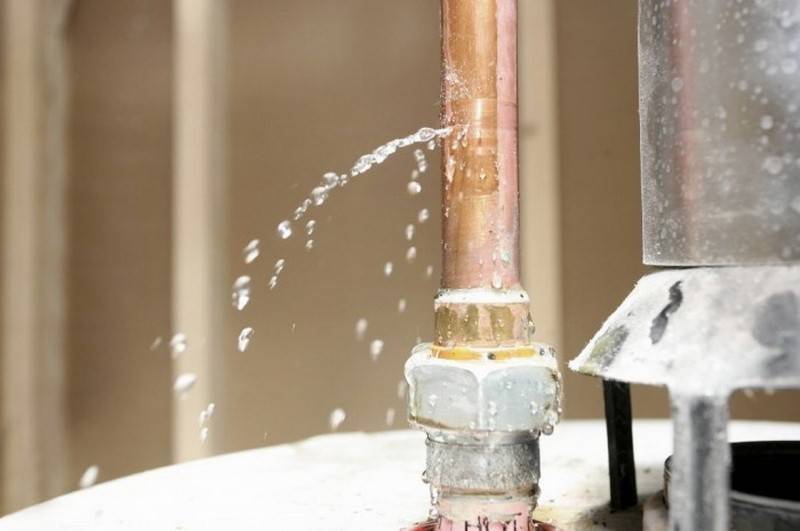

Filling closed systems
The steps to complete this type of system differ from the standards. On the contrary, the valves are primarily closed. Only the one through which water is poured into the system is left open. Then a pump is connected to ensure a stable pressure in the pipes. The air from the batteries is released using taps only after the entire system is filled with water.
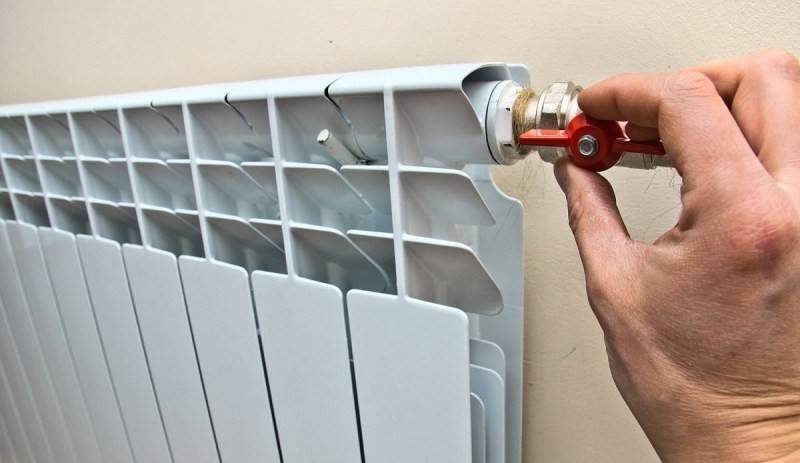

You see, if you follow the rules and carry out prevention, it is quite possible to minimize the likelihood of air jams in the heating system, which reduce the temperature regime in the apartment.
Application of the Mayevsky crane
You can release air using special removable handles. They are put on the inside of the valve, which is made of metal. If such a handle is missing, it must be replaced with a screwdriver notch.
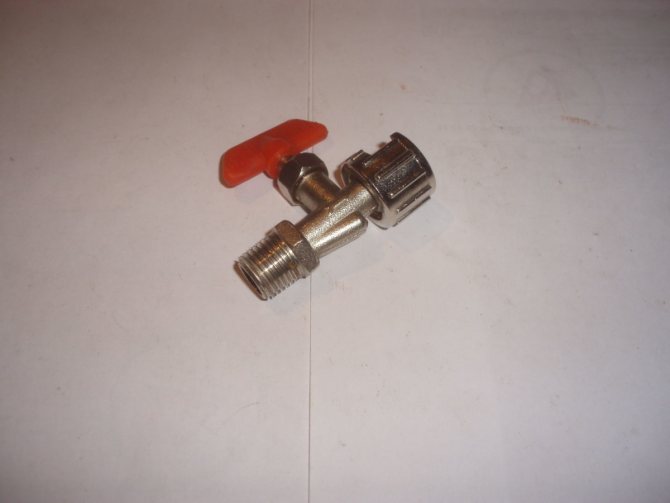

Mayevsky's crane is a convenient device
How to properly remove air from the heating system?
- Place a container under the tap (volume - 500-1000 ml).
- Unscrew the tap. Wait for air to escape. Then a characteristic hiss will appear, indicating the outflow of air mixed with water.
- Wait for clear water to come out.
- Close the tap.
If there is no handle, then you will need to use a screwdriver or wrench. You can use a gas or adjustable wrench. If the valve is tightened very tightly, proceed with caution. Otherwise, you can disrupt it, the consequences of which can be catastrophic.
The instruction is as follows:
- Wrap the surface of the radiator. A rag or rag is used. Place the container underneath to drain the liquid.
- Unscrew the tap, wait for the hiss to appear.
- Wait for the water to drain.
- Drain off water (up to 2000 ml).
- Turn on the tap.
- Wait 10-12 minutes.
- Unscrew the tap, make sure that the air has escaped completely.
- If this does not happen, you need to repeat the procedure.
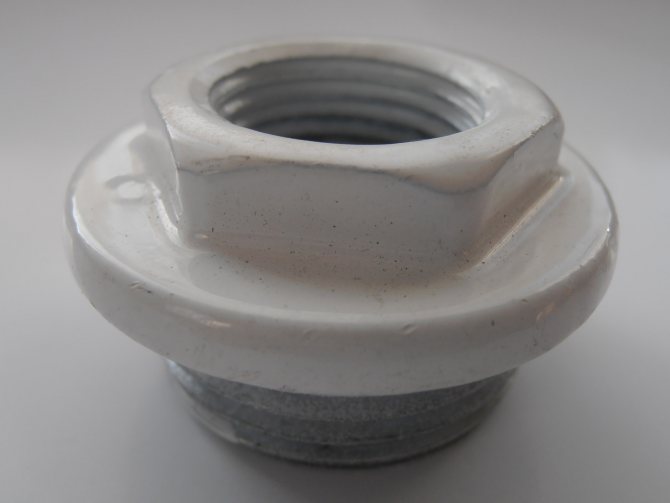

Battery plug
If there is no tap, and instead of it there is a Soviet-style plug, you need to proceed as follows:
- Wrap the desired area with a thick cloth. You can use rags. This will eliminate the risk of a large head.
- "Arm" with a converter (can be replaced with a solvent).
- Carefully rotate the plug. You don't need to get it out completely, otherwise the apartment will be flooded.
- Wait until the air masses come out. The flow can be felt by placing a hand in the place of the plug.
- Wait until water flows out (3000-5000 ml).
- "Arm yourself" with fum-tape, wrap the plug. The desired direction is against the thread. This ensures the required tightness.
- Tighten the plug as tightly as possible.
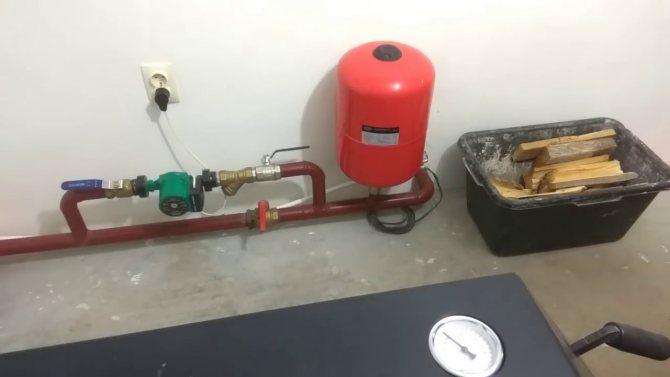

With individual heating, you can use an expansion tank
If the house has individual heating, you can get rid of the problem with the help of an expansion tank. They can be open or closed.
In the first case, we can talk about a decrease in the level of the coolant or water. They should be added to the system. It is advisable to use the bottom valve in this case. The radiator can be absolutely anything. If this is not possible, you will need to use the tank.
After removing the airlock, it is necessary to start the system. She should do a good job. If the plug remains, it is drained using a radiator.
If the type of tank is closed, then first you need to check its performance.
Reasons for airing the system
There are several fairly common reasons that provoke the appearance of an air lock inside heating structures:
- depressurization that occurred during the implementation of scheduled preventive or repair work;
- incorrect flushing or pressure testing of the system, followed by filling the water circuit with a standard coolant;
- local violation of the integrity of pipelines and radiator batteries under negative external influences or as a result of maintenance and operation errors;
- in private households - the absence of a sufficient pipe slope and an expansion tank in the installed system;
- reduced pressure level in the water supply system, filling the formed voids with air;
- faulty condition of the air intake elements;
- connection to the heating structure of the "warm floor" system with pipes of different heights;
- air suction through leaking seam joints and joint areas;
- low quality of the coolant, its oversaturation with gases;
- replenishment of the volume of the heat carrier by adding cold tap water.
One of the most common problems is the presence of errors and inaccuracies at the stage of creating project documentation or installing piping.
Reasons for the appearance
Air in the heating system can appear for various reasons. If this is a one-time problem, you can simply delete it and not search for the source. If airing is required several times per season, you will have to look for the cause. The most common ones are:
- Repair, modernization of the heating system. During repair work, air almost always enters the pipeline. It `s naturally.
- Filling the system with a coolant. If you pour water into the system slowly, it carries a little air with it, simultaneously displacing the one that is in the pipes and radiators. This is also an understandable process, and does not require any special measures.
- Depressurization of joints and welds. This defect requires elimination, since airing will occur constantly. In individual heating systems, this phenomenon (leaking connections) is also accompanied by a drop in pressure. And this is another reason to look for faults. The most likely place is the joints of pipes and radiators. They may be leaky. It is very difficult to look for them, since they do not always appear outwardly. If you notice that some of the compounds "breaks in" everything is much easier - you eliminate the drops. But if everything is outwardly normal, and the air accumulates all the time, you have to coat the joints and seams with soapy foam and watch if new bubbles appear. After finding each "suspicious" connection, they are tightened, coated with sealant or repackaged (the method depends on the type of connections).

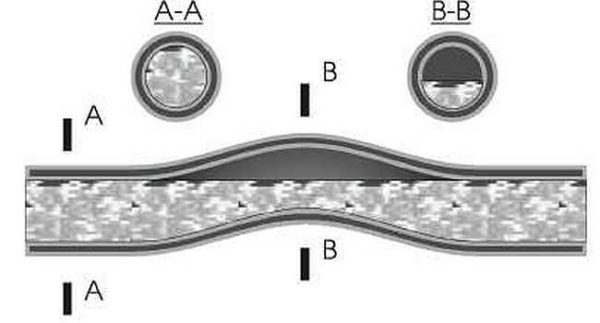
Air can accumulate in pipe bends
- If the heating system already has air vents (air vent valves) and plugs begin to appear in it, it is necessary to check the serviceability of the valves, as well as the tightness of the connections.
- The appearance of air in the heating system may be due to a rupture of the expansion tank diaphragm. In this case, the membrane will have to be changed, and for this it is necessary to stop the entire system.
These are the most common places and ways in which air gets into radiators and batteries. It is necessary to expel it from there from time to time, but with the autumn start-up of heating it is necessary.
Heating system without air pockets
To prevent air from accumulating in problem areas in an individual heating system, but to go outside, it is necessary:
- correctly design and install the pipeline, correctly install the radiators;
- use automatic and manual air vents.
Consider how to expel air from a heating system with natural circulation and top wiring
When arranging the pipeline, it is important to observe such an angle of inclination at which air bubbles move freely up to the highest point of the contour, without accumulating at turns and gentle sections. At the highest point of such a system, an open-type expansion tank must be installed through which air bubbles enter the atmosphere.
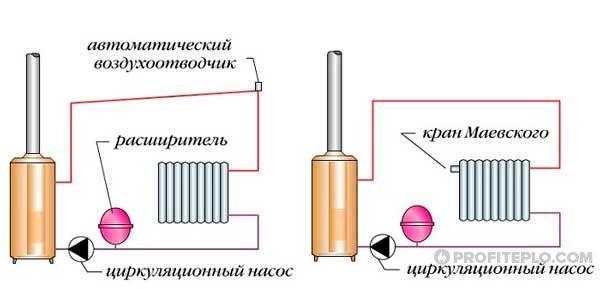

Bleeding air from the heating system using an automatic air vent
A different principle is used to bleed air from a forced movement system or a gravity system with a bottom wiring.
... Return pipelines are installed under a slope (this simplifies the drainage of fluid from the system), and automatic valves are installed at the top of all individual circuits, through which air is discharged as it accumulates.
In addition to automatic air vents, the system also uses Mayevsky's manual taps. Such air vents are mounted on heating radiators - on the upper branch pipe on the opposite side of the pipe supplying the heated coolant. In order for air to enter the valve, and not accumulate in the upper radiator manifold, it is recommended to install the heating device at a slight angle. Air venting is done manually as needed.
How to find an airlock?
Ideally, the system is able to cope with the airing on its own thanks to the automatic valves through which the air is released. Having found that a separate heating device or part of the circuit does not work properly, it is necessary to find a place where an accumulation of air has formed.
Touch the radiator - if its upper part is colder than the lower one, it means that the coolant does not enter there
... To release the air, open the Mayevsky tap mounted on a steel, aluminum or bimetallic radiator, or a valve tap mounted on cast iron batteries.
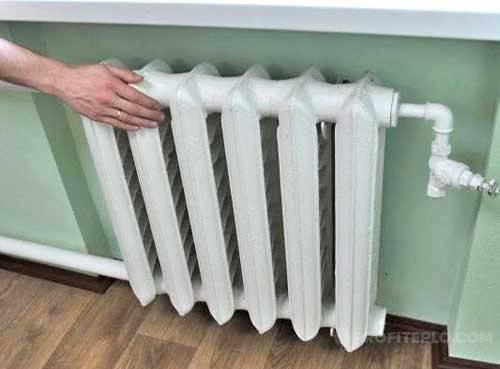

How to identify an airlock in a battery
You can also determine the place of airing by sound - under normal conditions, the coolant moves almost silently, extraneous gurgling and overflow sounds occur due to an obstacle in the flow
.
Metal pipes and heating devices are tapped with light blows - in places where air accumulates, the sound is noticeably louder.
Getting rid of the airlock
If there are manual air vents on the radiators, there are no problems with how to remove air from the batteries. Using a screwdriver or a standard key, the stem of the Mayevsky valve is slightly unscrewed, while a suitable container is placed under the drain hole (a half-liter glass jar is enough). Bleeding air from the heating system using a manual air vent is accompanied by hissing and whistling, then splashes appear, after which the coolant begins to flow in a thin stream. At this stage, the Mayevsky valve should be closed.
To remove an air lock from the heating system, if it has accumulated on the side of the air vent (manual or automatic), proceed as follows
:
- Open the air valve or valve closest to the air bubble.
- They begin to gradually feed the system with a coolant so that the liquid, by increasing the volume, displaces the air bubble towards the open air vent.
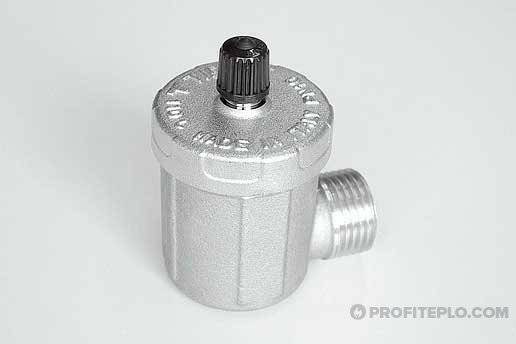

Automatic air vent valve with angle connection
What to do in difficult cases when the plug is not removed by adding the volume of the coolant? In such a situation, in addition to increasing the amount of coolant, it is required to add pressure, heating the liquid to critical temperatures. You should be extremely careful not to be scalded by splashes that accompany the air release through the automatic valve.
How to bleed air from a heating radiator
Diagnosing the problem
The air will be released from the top of the battery, where the cold air is located. After starting the system, the battery in the room will be completely or partially cold. The bottom of the battery can get very hot. However, the problem may not lie in airiness, therefore, identifying the cause of the problem is the main criterion for the subsequent solution of the problem.
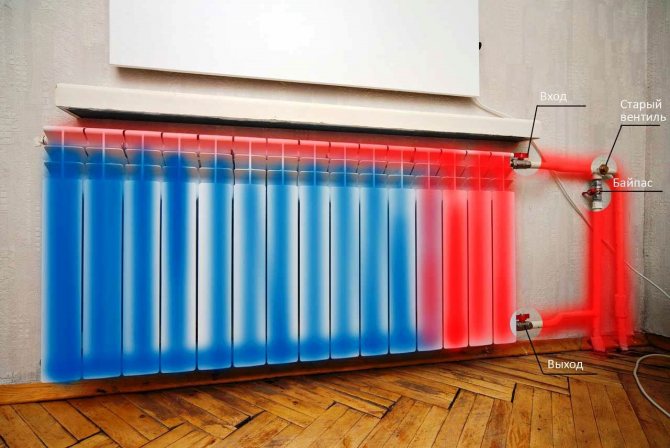

The heating radiator can become very hot, therefore, be extremely careful when venting. It will not be superfluous to use special protection on the face and hands. Situations can be as follows:
- With the minimum heating of the batteries located on the upper floors of the house, and the maximum heating of the batteries on the lower floors, it will indicate insufficient pressure inside the system. Hot water is simply not able to reach the upper floors.
- If, in addition to the general problem, regular puddles form under the batteries, then there is a small leak. The heating is turned off, the nuts are all tightened (on the battery outlet valve first of all). However, the problem may not be solved, because the nut can rot. Such an element must be replaced.
- A more serious problem will be indicated by extremely hot or very cold batteries. The problem will lie in the boiler or heater, inside which sediment (sludge) could accumulate for years, which must be completely removed.
Radiator wrench
To open the air valve, you need a special device - a radiator wrench.
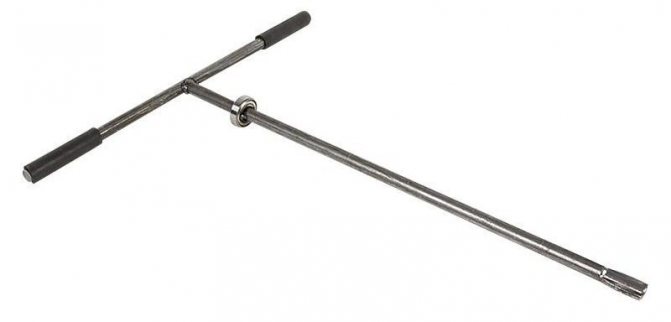

Radiator wrench
At the top there will be a small valve that you need to find (grope). On its surface there will be a small square part, by turning which you can adjust the valve operation. In fact, such a tool will be inexpensive, but it is simply irreplaceable for opening and closing valves. You can buy it at any hardware store. The key size must be correct.
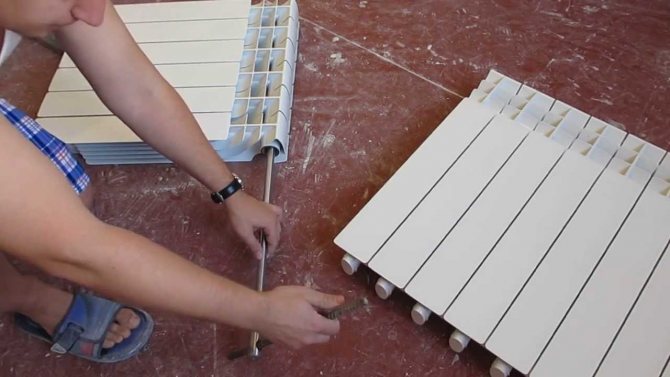

Working with the radiator key
A key from a plumbing set can also be used for turning. More modern battery models will be equipped with adapters that will allow the element to be scrolled with a screwdriver. In most cases, a Mayevsky needle-type crane will be used. To turn the valve, you must place the key in a special thread, then slowly turn it counterclockwise.
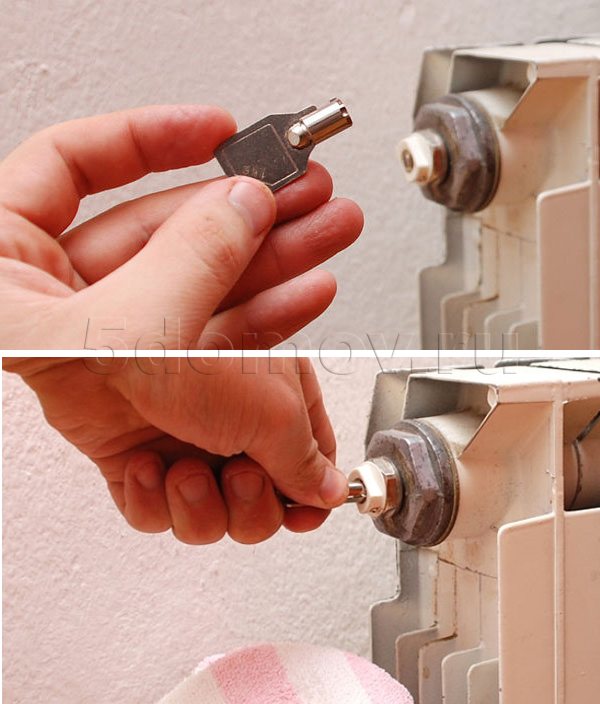

All tools should be checked before venting air from the system (a wrench and screwdriver will also be needed). Similar manipulations should be done with each battery located in the house.
Turning off the heating system
Turn off the heating system before venting any air bubbles. This will not be a problem for private houses, but for apartment residents, things are a little different. In this case, you will have to wait for the onset of spring, when the heating will be turned off by the city's utilities.
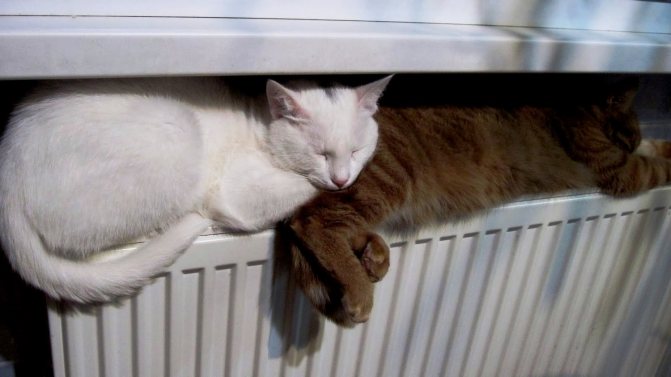

When the valve is opened in the process of heating the heating radiators, the system will air even more. The entire contents of the radiator must settle before the system is vented.After the system has cooled down, you can proceed to the next steps.
Opening valves on the battery
The outlet and inlet valves must be simultaneously open (position - open).
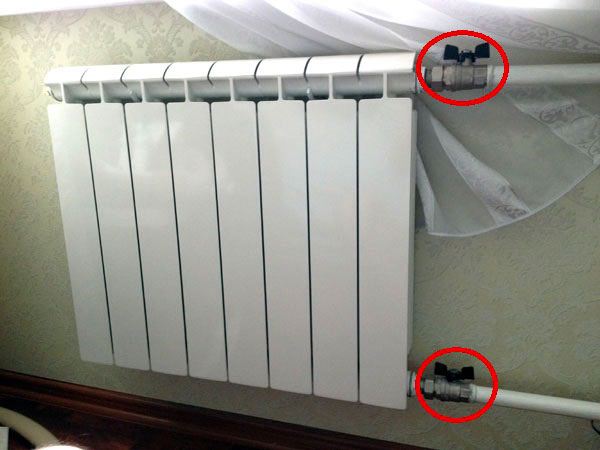

The photo shows the position of both valves "open".
After that, a pre-prepared key is inserted, which is located at the top of the heating radiator. Turn slowly and counterclockwise to open the valve.
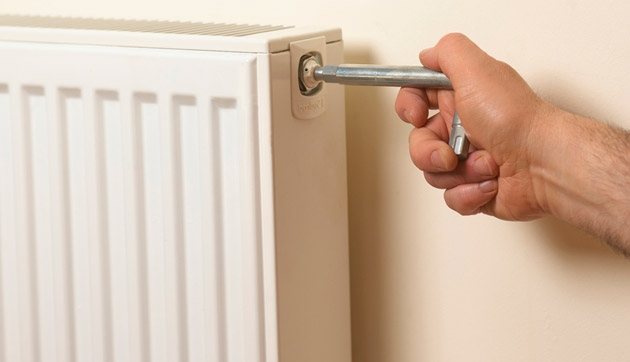

After that, a characteristic hissing sound will appear, which will indicate that everything is being done correctly, and the air leaves the system. When the air valve is opened, cold air masses will come out, which do not allow the collection of liquids through the pipes that are connected to the common system.
Draining water from the battery
At the moment when the air masses leave the heating radiator, water will begin to ooze (drip). To avoid embarrassment, you should use a towel or cloth to remove drops from the surface. A plate or bowl can also come in handy.


It is recommended to bring the container to the tap before you start to open it.
Waiting for the water to drain
After a while, the water will stop dripping completely. After a steady flow of liquid (without air) comes out of the valve, manipulations can be stopped, since air is completely removed from the system (in this area).
The air valve is tightened again (clockwise). There should be no leaks. Any liquid is removed with a rag, including a puddle near the battery.
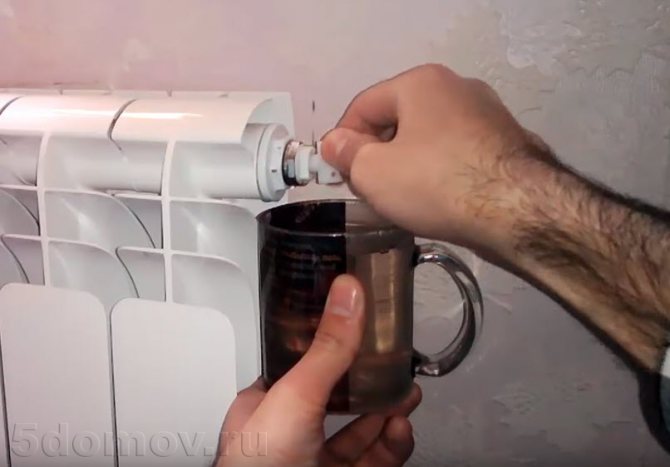

Repeated manipulations
Similar manipulations should be repeated with all batteries in the house. After all the air has been completely removed from one battery, the rest should be checked, since the problem will not arise in only one area.
In order for the system to work at full capacity and without interruptions, the system is vented once a year, with the onset of the heating season or with the arrival of the first cold weather. During this period of time, it is recommended to carry out all necessary modifications and repairs related to the heating system.
Bleeding air from the heating radiator if there is a boiler
If a boiler is connected to the heating system, then the pressure indicator inside the system should be checked. After removing excess air from the system, a significant decrease in the total pressure will occur.
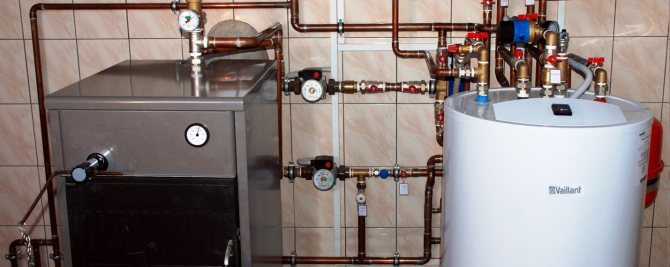

If this indicator reaches a critical point, then some batteries may be left without a coolant (upper floors). In this case, you will need to add running water to the system to restore the pressure indicator.
If an automated system is installed that is responsible for the addition of the coolant, then the pressure indicator will be about 0.8-1 bar. No outside interference is required. If such a device has not been installed, then the coolant is added manually until the pressure indicator reaches 0.8-1 bar. For a small private house, this figure is more than enough.


The higher the pressure, the higher the height of the coolant will be delivered. The power of the system itself and the boiler in particular will depend on this.
Methods for removing air from hot water heating systems
Since heating can be both natural and forced circulation of the coolant, the air in the heating system can also be removed in different ways.
For systems with natural circulation (top piping is considered), the air lock can be removed through the expansion vessel, which should be at the highest point relative to the entire system.
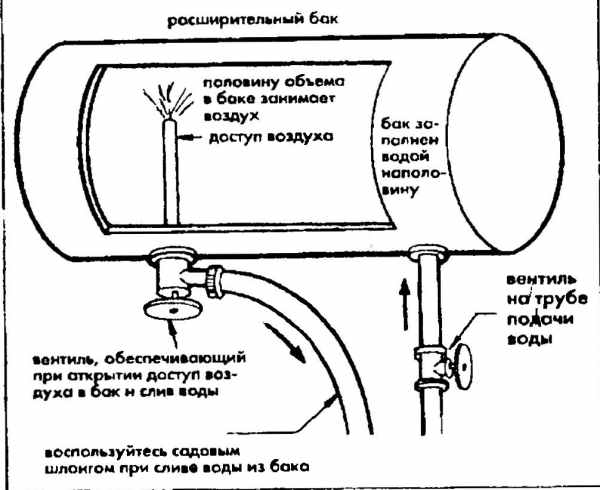

Removing air through the expansion tank. Click to enlarge.
The supply line should be laid with a rise towards the tank.If the wiring is lower, it is necessary to provide for air removal in the same way as in a heating system with a circulation pump.
For systems with forced circulation, an air collector should be provided - at the highest point, which will be responsible for air release.
In this case, the supply pipeline is laid with a rise in the direction of movement of the coolant, and air bubbles, rising along the riser, are removed from the heating system through air taps, which must be installed at the highest point.
In any case, the return pipelines should be laid with a certain slope - towards the water drain in order to speed up the emptying of the pipes during repair work.
In closed-type heating systems, automatic air vents are provided - they are installed at several points along the pipeline, the air from which is discharged separately.
If the installation of the heating system and the laying of pipes at the required slope are done correctly, then bleeding through the "air vents" will be simple and not entailing any problems.
I would like to note that the removal of air from the pipes is accompanied by an increase in the flow rate of the coolant and an increase in pressure in them. In the case of airing heating batteries, there may be poor tightness of the heating pipelines or an uneven temperature difference.
Very often, in residential buildings equipped with an autonomous boiler with an open heating system, water can be discharged directly through the expansion tank: after emptying, it is advisable to wait at least half an hour and only then open the "air vent" on the tank - all the air will go out on its own when the water temperature in the system rises ...
Why does air accumulate in water heating radiators?
There are no questions about the appearance of air inside the radiators when the heating elements have just been installed new or have undergone major repairs. It is more difficult to figure out where the air locks come from during the intensive use of the system. This is often caused by mistakes in installation or operation.
If you cover all cases of a problem, then air appears in heating for the following reasons:
- the gravity system does not have a pipe slope;
- the battery is placed on the brackets not at the level with strict horizontal position;
- the filling of water into the heating system is done incorrectly;
- depressurization of nodes, poor connection of some heating elements;
- lack of automation for air bleeding or its breakdown;
- minor repairs of a separate unit, as a result of which there was a depressurization of the system;
- accumulation of a large amount of rust inside the battery sections;
- pouring into the autonomous heating a new portion of water containing a large admixture of air.
Violation of the horizontal position of the battery will lead to its frequent airing.
It is for what reason that air appeared inside the battery is difficult to find out. However, knowing them, it is worth taking measures in advance to reduce the likelihood of air heating.
Reasons for the formation of air congestion
For efficient heating of your home, it is necessary to remove air "plugs" in a timely manner.
"Blockage" or an air lock can form in pipelines if:
- The heating system was being repaired - during the repair work, the appearance of air is inevitable.
- When laying and installing pipes, the required slope and its direction were not observed.
- Pressure drops - since the water level in the pipes drops over time, the pipelines are emptied, filling with air.
- A heating system with natural circulation of the coolant has been installed (in private houses of small areas, heating is arranged without forced circulation, i.e., a circulation pump is not installed).In this case, airing of the heating system occurs due to a possible pressure drop in the pipes.
- The coolant leaks through poorly sealed pipe joints. It is quite difficult to notice a leak if the flaw is small (for example, the connection is not very tight), and hot water can flow and immediately evaporate.
- The heating system does not fill up correctly after a long period of inactivity (in autumn). Some homeowners strive to fill the pipes with water quickly and "to capacity", but this is wrong. Filling should be done slowly while removing air from the heaters and distribution pipes.
Air can also enter the pipes directly with the coolant - as you know, there is some content of air bubbles in the water, which rise up when the temperature of the water rises.
In houses where water “warm floors” are also connected to the common distribution manifold, it is also possible to observe the formation of an air lock in the heating system.
The reasons are almost the same, but the elimination of this problem is quite problematic, since the pipes are unevenly located in their height. Hence the conclusion: it is necessary to constantly monitor the pressure and flow rate of the coolant in the pipes or install air collectors (they are also called "air vents").
With aluminum batteries
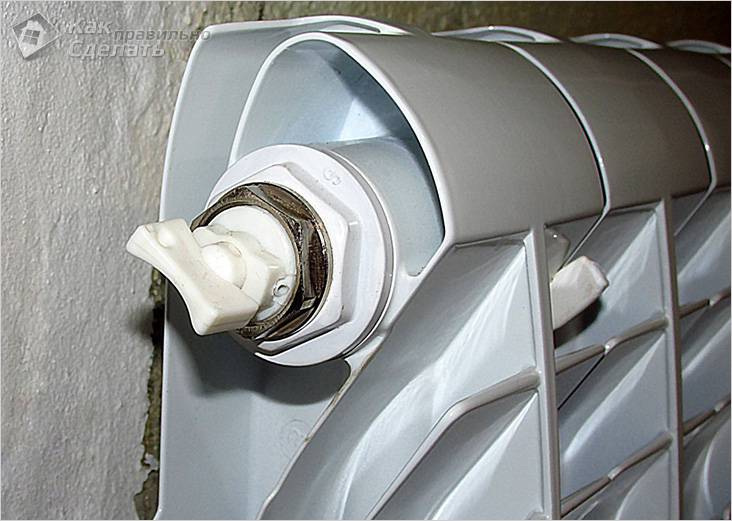

Bleeding air
Now many people have begun to install aluminum batteries in houses and apartments, so a quite reasonable question may also arise about how to release the air from the bottom. Here, too, there will be no difficulties, since in most cases the already familiar Mayevsky crane is installed in the battery, therefore the process of bleeding air occurs in the same way as with cast-iron batteries.
We also note that a decrease in pressure in the pipes is a sign of a leakage of the system, and the appearance of a noticeable temperature difference indicates the presence of air locks in the radiators.
How to get rid of an airlock
Unfortunately, the airlock is not always in an easily accessible place. In the event of design or installation errors, air can accumulate in the pipes. Bleeding him out of there is very difficult. First, we determine the location of the plug. In the place of the plug, the pipes are cold and a murmur is heard. If there are no obvious signs, they check the pipes by sound - they tap on the pipes. In a place where air is accumulated, the sound will be louder and louder.
The found airlock must be expelled. If we are talking about the heating system of a private house, for this, the temperature and / or pressure is raised. Let's start with the pressure. The nearest drain valve (in the direction of movement of the coolant) and the make-up valve are opened. Water begins to flow into the system, raising the pressure. It forces the plug to move forward. When air enters the vent, it comes out. Stop making up after all the air is gone - the drain valve will stop hissing.
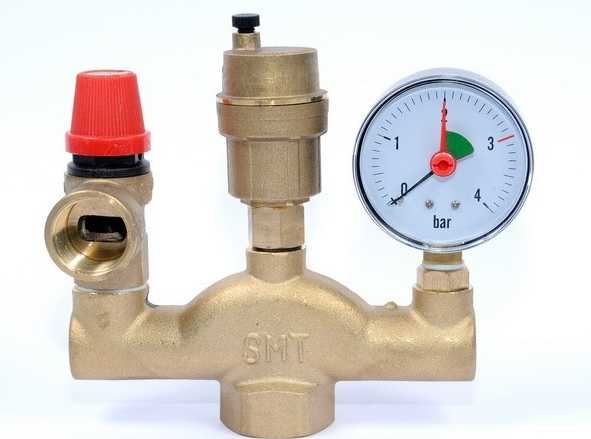

This is a security group. An automatic air vent is installed at the middle outlet
Not all air locks give up so easily. For extra stubborn, it is necessary to simultaneously raise the temperature and pressure. These parameters are brought to values close to the maximum. You cannot exceed them - it is too dangerous. If after that the plug has not gone away, you can try to open simultaneously the drain valve (to drain the system) and the make-up valve. Maybe this way it will be possible to move the airlock or get rid of it altogether.
If a similar problem occurs constantly in one place - there is an error in the design or wiring. In order not to suffer every heating season, a valve for air exhaust is installed in the problem area. A tee can be cut into the line and an air vent can be installed on the free inlet. In this case, the problem will be solved simply.
Reasons for the formation of air congestion
Getting rid of air in the system
Why does air appear inside a sealed heating system? This can happen due to:
- Failure to comply with the standard for the direction of the slope and places of bends of the main pipelines during installation work.
- Incorrect filling of the entire system with water.
- Loose connections of various components and elements that contribute to the suction of air from the external environment.
- Incorrect operation of the air vents or their absence.
- Carrying out repair work to replace risers, locking mechanisms, heating devices, as a result of which air enters the heating system
- Using fresh water to refill the system. Cold water contains a fairly large amount of dissolved oxygen. As the temperature rises, its concentration in water decreases significantly. The air from the coolant is released by small bubbles, which rise and are collected by an air lock at the extreme upper points of the heating system and radiators.
Why are air masses in a heating radiator dangerous?
The characteristic gurgling sounds that will come from the battery can indicate that air bubbles have entered the heating system, and the radiator surface itself will practically not heat up.


The danger will be that oxygen accelerates corrosion, which negatively affects the integrity of the entire system. The reasons for its entry may be different, but often we are talking about significant violations of the installation work of the system itself, the use of a low-quality coolant.
Reasons for the appearance of air in the heating system
Without exception, all residents of our country are familiar with the term "airlock" firsthand. Such phenomena are extremely common in the spring, immediately after the launch of the boiler houses, which is accompanied by the supply of coolant to the apartments.
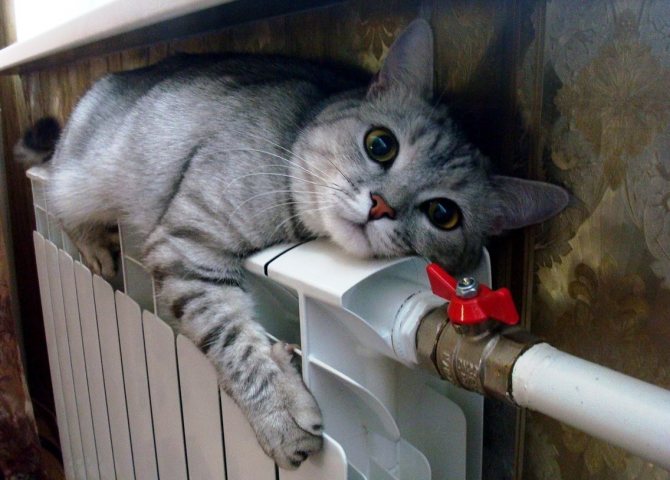

Often, residents of upper apartments observe a situation when the upper part of the battery remains cold, while its lower part practically does not heat up. The point is the accumulation of air in the heating radiators. There may be several reasons:
- Independent connection of the thermal water floor system, which is not allowed in old-style apartments. In it, the pipes will be at different heights.
- Intake systems can also fail.
- The pipe joints were not properly sealed, after which a coolant leak formed. It is difficult to notice such leaks, and hot water can evaporate altogether. Loose seams are a common cause of air bubbles entering the system.
- The filling of the system was carried out with violations. Filling is slow because the pipes have been empty for some time. Thus, air is released from the system at the same time.
- Air locks can also form due to the release of bubbles from the heated coolant. They will strive to get to the top of the system - the upper floors of apartment buildings.
- With insufficient pressure inside the system. Low pressure will create voids that will fill with air.
- Failure to comply with the direction and value of the slope used when laying the main pipelines.
- Any disassembly or assembly of the system will be accompanied by airing.
Installation of air vents
At all upper points of the system, be it pipe bends or radiators, air vents need to be installed - the main tool in the fight against congestion. The air vent can be automatic (valve) or manual (Mayevsky valve). The automatic valve will do everything by itself, unnoticed by the owner.
In order for the automatic air release valve to work properly, you need to make sure that the coolant is clean all the time.
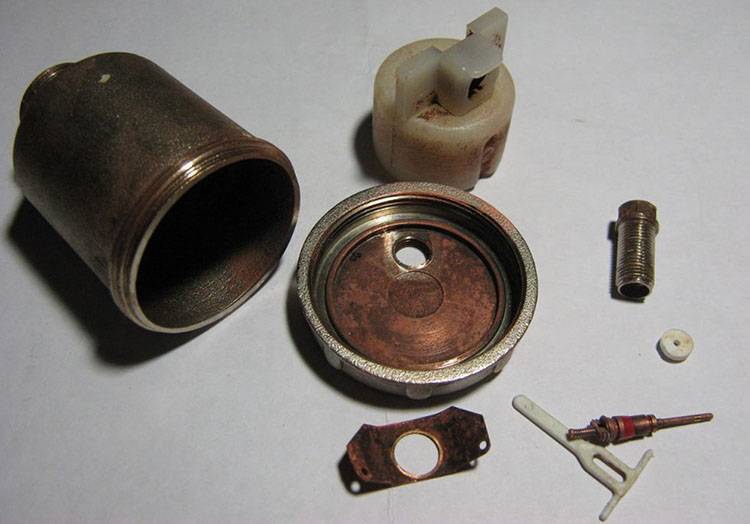

Internal structure of the automatic air vent
In manual mode, if signs of airiness appear (decrease in temperature in the area, gurgling, drop in pressure), you need to immediately take care of the release of air.
When replacing a radiator, they buy a mounting kit, which has everything you need for installation, including the Mayevsky crane. But air vents are sold separately. They are placed in the upper radiator nozzle, on the opposite side from the supply inlet.
Radiator Bleeding Tools
Before starting the necessary manipulations, you should make sure that all the necessary devices are at hand. There will be no time to look for what you need in the process.
| Necessary items | Method of use |
| Unnecessary rags | With their help, you should lay the floor around the battery. If something goes wrong, this will help keep not only your own property, but also your neighbors', intact. |
| Bucket, basin or any other container | Excess water will drain into the container. |
| Radiator key | Can be purchased at any hardware store. The size must correspond to the installed battery. A home set of tools can replace a wrench - a wrench of the desired diameter. A screwdriver is suitable for venting air masses. |
To test the battery, just tap it lightly with a hammer. If the sound is too loud, there is air.
Installing air relief valves
To remove air from the heating, air vents are installed on the radiators - manual and automatic air valves. They are called differently: a vent, an air vent, a bleed or air valve, an air vent, etc. The essence does not change from this.
Mayevsky air valve
This is a small device for manually bleeding air from heating radiators. It is installed in the upper free radiator manifold. There are different diameters for different sections of the collector.
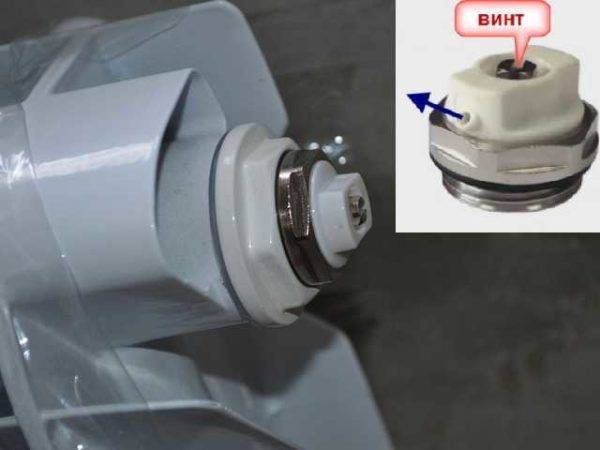

Manual air vent - Mayevsky crane
It is a metal disc with a conical through hole. This hole is closed with a tapered screw. By unscrewing the screw a few turns, we provide an opportunity for air to escape from the radiator.
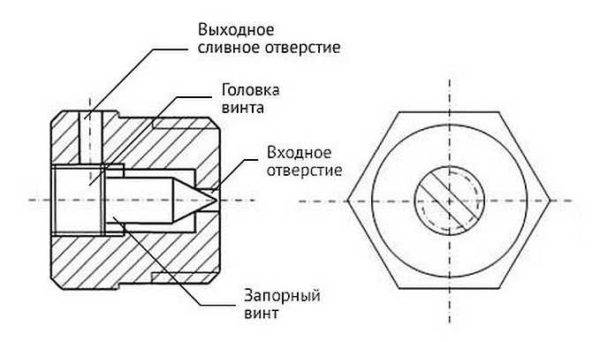

Device for venting air from radiators
To facilitate the air outlet, an additional hole is made perpendicular to the main channel. Through it, in fact, the air comes out. While airing with a Mayevsky crane, direct this hole up. After that, you can unscrew the screw. Unscrew a few turns, do not twist too much. After the hissing stops, return the screw to its original position, go to the next radiator.
When starting up the system, it may be necessary to bypass all air collectors several times - until the air stops coming out altogether. After that, the radiators should warm up evenly.
Automatic air relief valve
These small devices are installed both on radiators and elsewhere in the system. They differ in that they allow you to bleed air in the heating system in automatic mode. To understand the principle of operation, consider the structure of one of the automatic air valves.
The principle of operation of the automatic escapement is as follows:
- In the normal state, the coolant fills the chamber by 70 percent. The float is at the top, presses the stem.
- When air enters the chamber, the coolant is displaced from the body, the float is lowered.
- He presses a ledge-flag on the jet, squeezing it out.
- The wrung out orifice opens a small gap, which is enough for the air that has accumulated in the upper part of the chamber to escape.
- As the water escapes, the air vent body fills with water.
- The float rises, freeing the stem. It is returned to its place by means of a spring.
Different designs of automatic air valves work according to this principle. They can be straight, angular.They are placed at the highest points of the system and are present in the security group. They can be installed in identified problem areas - where the pipeline has an incorrect slope, due to which air accumulates there.
Instead of Mayevsky's manual taps, you can put an automatic drain for radiators. It is only slightly larger in size, but it works in automatic mode.
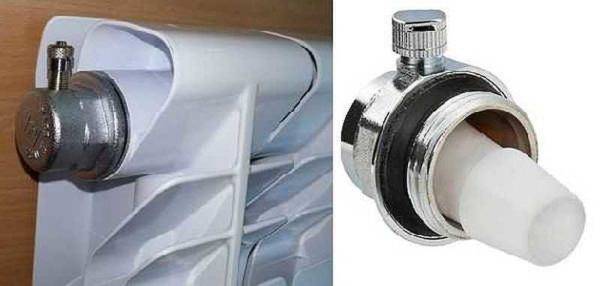

Automatic air vent for venting
Salt cleaning
The main trouble with automatic valves for venting air from the heating system is that the air outlet is often overgrown with salt crystals. In this case, either the air does not come out or the valve starts to "cry". In any case, you need to remove and clean it.
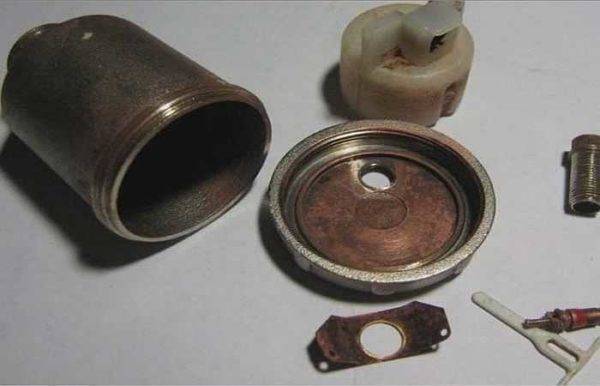

Disassembled automatic air vent
So that this can be done without stopping the heating, automatic air valves are paired with non-return ones. A check valve is installed first, an air valve is installed on it. If necessary, the automatic air collector for the heating system is simply unscrewed, disassembled (unscrewed), cleaned and reassembled. The device is then ready to bleed air from the heating system again.
How to bleed air yourself
It is not difficult to pump over the water floor, this procedure can be done independently.
However, it should be noted that, depending on the structure of the structure, the process of removing the air flow from the pipes differs.
How to bleed air from a circuit operating from a circulation pump
To evacuate air from a genital circuit equipped with a pump, proceed as follows:
- It is necessary to close the flow meters on the manifold leading to all loops.
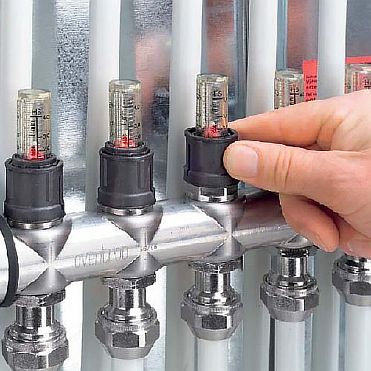

- Bleed the circulation pump.
- Open the ball or Mayevsky valve on the comb, and one floor loop.
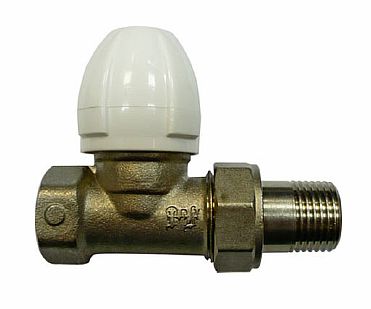

The process of opening the Mayevsky tap is to hold the white part of the valve with one hand so that it does not dangle. The second one should unscrew the valve located in the middle.
- Then you need to turn on the circulation pump at low speeds. The pressure should be 20% higher than usual.
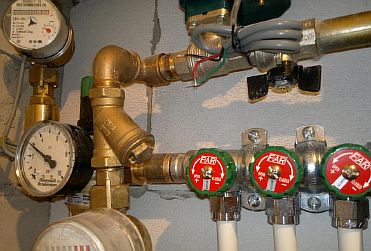

- Turn off the pump and close the valve after water appears from the air vent.
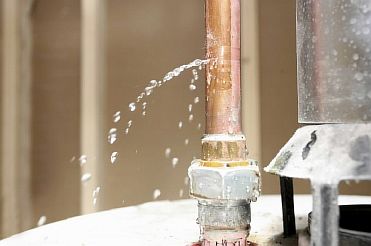

- This procedure must be repeated several times, at intervals of several minutes, until all the air has gone down.
- This action must be carried out with each loop. Repeat the process for 2 - 3 days, until the air is completely bled.
- Then the pump must be turned on to the maximum, and the entire pipeline must be purged.
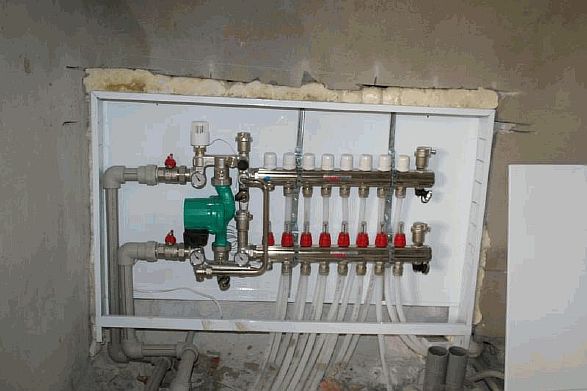

Only after complete bleeding of air masses should the heating floor be started. In the process of operation, the circuit may become airy again, therefore it is recommended to periodically push the air.
Bleed off the gravity system
In the presence of a gravity structure, in which there are no drain valves, the question arises - how to expel air from the underfloor heating system? We'll have to wait until the air masses themselves come out through the expansion tank.
In this case, the device should not work and the water in it should be chilled. The process can take several days.
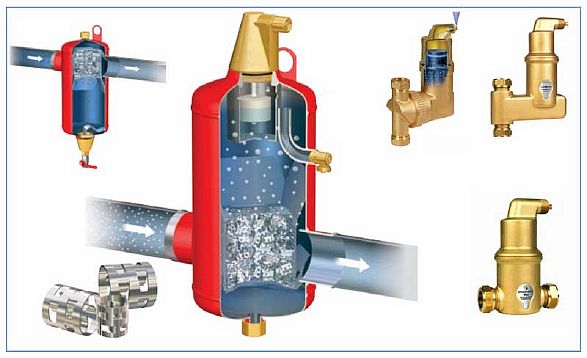

In a word, in order to bleed air bubbles from such a line, it is required to turn off the boiler and the motor, and let the hydraulic floor cool down.
How to bleed air with automatic vents
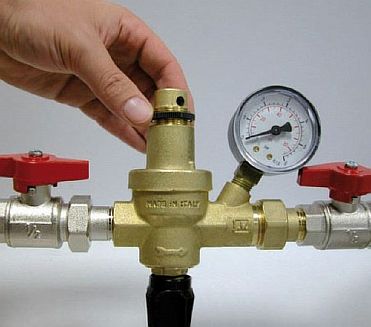

Currently, there are special vents or separators that automatically expel air masses from the circuit.
With their help, it is easy to bleed the plugs, while they do not require special maintenance and care.
Install automatic drains at the highest point of the heating pipeline, because this is where air accumulates.
They do not need to be included in the safety group, since there is no concentration of air masses there.
We expel air with a strong pressure of water
Theoretically, it is possible to bleed air with a large pressure of water, but it is quite difficult to do this.A powerful pump with a pressure of more than 2 atmospheres is required to blow through the pipes.
But it is possible to remove traffic jams using this method only from an open system, with a small number of branches. In addition, this method results in the overflow of the expansion barrel. Therefore, it is advised to use it only if you have experience in carrying out similar work.
Squeezing the plugs by draining the water
This method is recommended to use if a gravity structure will air. A large amount of water is drained from the bottom and at the same time filled from above.
In this way, you can bleed the plugs. They move, break and squeeze out of the pipeline.
Filling the system with water
- To begin with, we open all the taps (on both sides of the pump, on all radiators, on the collectors of the water floor, on the expander), and Mayevsky's taps are closed.
- The system must be filled from the bottom up. The inlet is made at the lowest part (through it, the coolant is drained and poured).
- From above, the main valve (at the highest point of the system) opens to release air and slowly fills. There is no need to rush, just so that the air can escape. The fluid supply remains open until water comes out of the valve.
- The system builds up the pressure recommended for it as a working one. Then, one by one, the air is vented from each radiator in the house (it's time to turn off the tap when the water runs in a trickle).
- There is a screw in the central part of the circulation pump, which is slightly unscrewed with a screwdriver. Air is vented from the pump, then twisted.
- After the air is vented, the pressure in the system will drop and it will be necessary to turn on the water supply again to make up for the losses.
- After that, a test run of the boiler is done at a low temperature (about 40 ° C), with the pump turned on. During this start-up, it is advised to bypass and look through all the elements of the system - if there is a leak, if air is coming out somewhere, if all radiators are warming up evenly. Then, it may be necessary to add water again and then start the boiler into operating mode.
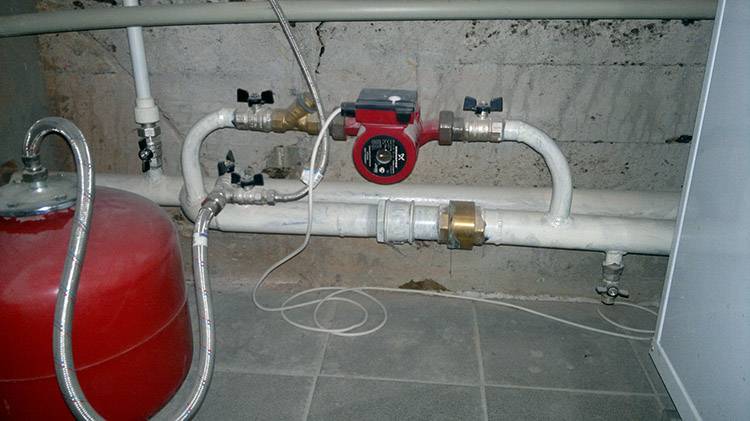

Filling the system with water
If suddenly one of the valves remains closed, and the system is already full and the pressure is high, you need to open the valve very slowly and carefully. Otherwise, you will get a decent water hammer.
How to bleed air from a heating radiator with a Mayevsky tap
Such a device can be found on the top of the battery, which is used in almost every modern home. No expensive tools are required to open the tap. There is no need to pre-block the entire riser, as well as wait until the coolant has completely cooled down.
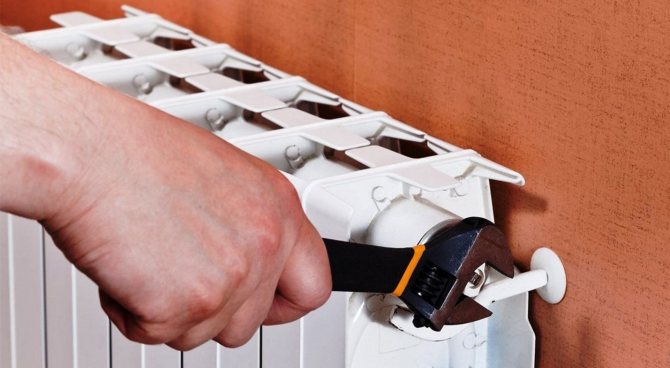

Such manipulations are a waste of time, and the effectiveness of subsequent actions will be reduced, since the pressure indicator inside the system will significantly decrease.
| Approximate order of actions: |
| 1. Place a basin or any other container under the selected battery. |
| 2. Place several rags on the air vent. After the liquid has been absorbed, it will begin to drain smoothly. |
| 3. Using a wrench, carefully and slowly unscrew the tap, holding on to the plastic handle. A hiss or whistle will indicate the release of air masses. |
| 4. The water jet should start to flow evenly. This will break the air plug. This will take no more than 10 minutes. Specialists will drain up to two buckets of coolant. |
| 5. Close the valve in use tightly. |
You can watch the video for more information about the process of deflating air in this way:
Methods for removing an airlock from the cooling system
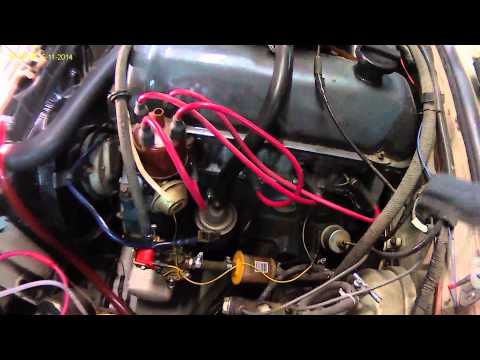

How to expel an airlock from the cooling system of a VAZ classic
There are three main methods by which an airlock can be removed. Let's list them in order. The first method is great for VAZ vehicles. Its algorithm will be as follows:
Remove any guards or other items from the engine that might prevent you from reaching the coolant expansion tank. Disconnect one of the nozzles that are responsible for heating the throttle assembly (it does not matter, direct or reverse). Remove the expansion tank cap and cover the neck with a loose cloth. Blow inside the tank. In this way, you will create a slight excess pressure, which will be enough for the excess air to escape through the nozzle. As soon as antifreeze comes out of the hole for the nozzle, immediately put the nozzle on it and, preferably, fix it with a clamp
Otherwise, air will enter it again. Close the expansion tank cap and reassemble all previously removed engine protectors.
The second method is carried out in accordance with the following algorithm:
- Start the engine and let it run for 10 ... 15 minutes, then turn it off.
- Remove the necessary elements in order to get to the coolant expansion tank.
- Without removing the lid from it, disconnect one of the nozzles on the tank. If the system has been airy, then air will begin to come out of it.
- As soon as the antifreeze pours out, immediately reinstall the pipe and fix it.
When doing this, be careful, since the temperature of the antifreeze can be high and reach a value of + 80 ... 90 ° C.
The third method of how to remove an air lock from the system must be done as follows:
Place the machine on a hill so that its front is higher
It is important that the radiator cap is higher than the rest of the cooling system. At the same time, put the car on the handbrake, or better place stops under the wheels. Let the engine run for 10 ... 15 minutes. Unscrew the caps from the expansion tank and radiator. Periodically press the accelerator pedal and add coolant to the radiator
In this case, air will escape from the system. You will notice it by the bubbles. Continue the procedure until all the air is gone. In this case, you can turn on the stove to the maximum mode. As soon as the thermostat opens the valve completely and very hot air flows into the passenger compartment, it means that the air has been removed from the system. At the same time, it is necessary to check for bubbles escaping from the coolant.
As for the latter method, on machines with an automatically switched on cooling fan, you can not even over-gas, but calmly let the engine heat up and wait for the fan to turn on. At the same time, the movement of the coolant will increase, and the circulation will cause air to escape from the system.
In this case, it is important to add coolant to the system in order to prevent air bubbles again.
As you can see, the methods of how to get rid of an airlock in the engine cooling system are quite simple. They are all based on the fact that air is lighter than liquid. Therefore, it is necessary to create conditions under which the air lock will be forced out of the system under pressure. However, it is best not to bring the system to that state and take preventive measures in time. We will talk about them further.
Private house closed system - how to remove an airlock
In the circuit along which the coolant moves in a forced manner, operating at overpressure, an automatic air vent is placed. It is an element of the safety group of the heating unit and is installed at the outlet of the heat exchanger.
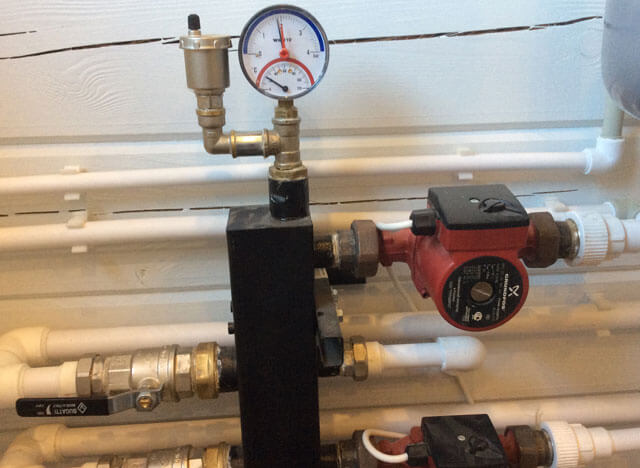

Some boiler models have their own safety group installed inside the body. All batteries located above the spills are supplied with Mayevsky taps or air vents. The latter are indispensable for diagonal or lateral connection of devices. In the case of a bottom two-way connection, an air-cooled radiator can function.The following method is used to bleed air from the heating system: it is forced out into the upper collector, and the coolant is launched through the lower one. The battery sections are warmed up in height due to the thermal conductivity of the metal.
Why batteries do not heat well
Cold batteries
During the heating season, many radiators do not heat very much, so the room is cold and uncomfortable. There may be several reasons for this phenomenon.
The first is that air has accumulated in the battery. This is indicated by a characteristic gurgling sound. The radiator becomes partly cold due to insufficient circulation of the coolant. In such a situation, it is very easy to purge the battery. If an aluminum radiator is installed with a thermostat, it is enough to open it completely and bleed the air. If there is no thermostat, open the Mayevsky tap or plug.
When opened through the hole, air will be blown out with a strong hiss. It must be vented until it all comes out and water flows. Its uniform jet will indicate that the airlock has been eliminated and the radiator can be operated normally. On cast iron radiators, special valves are used to bleed air.
The second reason for poor circulation of the coolant is not air, but a dense plug of scale and large particles that ply through the heating system along with hot water
Experts pay attention to the fact that even a millimeter thickness of scale deposits reduces the heat transfer of the battery by 15%. Therefore, it is advisable to purge the system before the start of each season and do it correctly.
How to understand that the accumulated scale is the reason for the ineffective operation of heating devices in the apartment? You need to pay attention to the following signs:
- The walls are covered with limescale if the riser is hotter than the radiator.
- Feel the radiators in all rooms in the apartment. Their different intensity of heating is a reason for "treatment".
- Uneven heating of sections of one battery.
What methods are there to fix these problems?
How to bleed air in old batteries with plugs
When using old-style batteries, you can find specific plugs that might not have been replaced with more modern Mayevsky cranes.
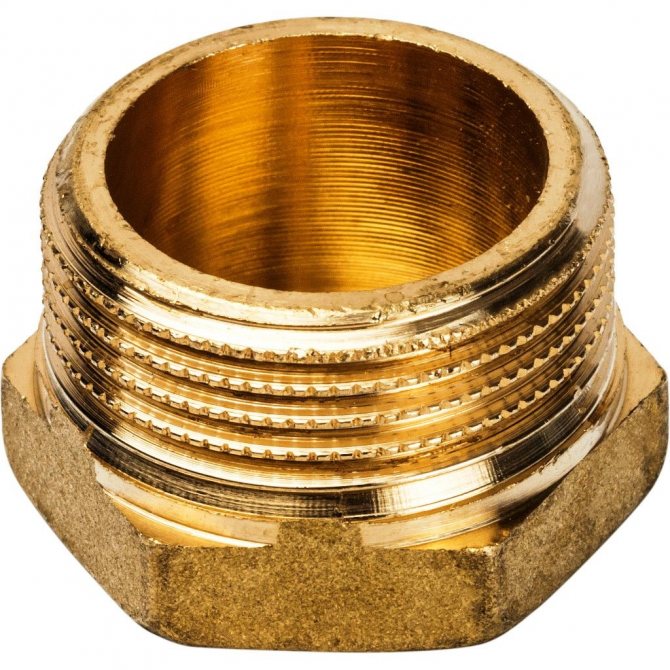

In this case, manipulations should be carried out extremely carefully, since they can be fixed not only with paint, but also with a layer of tow. First of all, the heating is shut off.
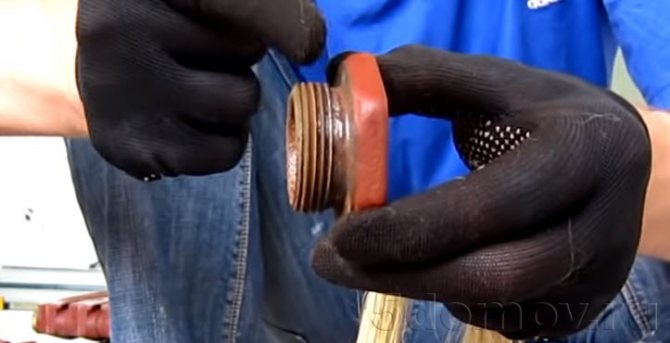

Cast iron radiator plug
You will need a gas or adjustable wrench.
| Procedure: |
| 1. The rags are laid on the floor surface. |
| 2. The bucket is placed under the tap. |
| 3. The plug is slowly unscrewed with a wrench. If all else fails, use a special lubricant or common solvent. |
| 4. After removing air masses and a certain amount of coolant, the plug is wrapped with tape or linen, and then twisted. In this way, future leaks can be avoided. |

